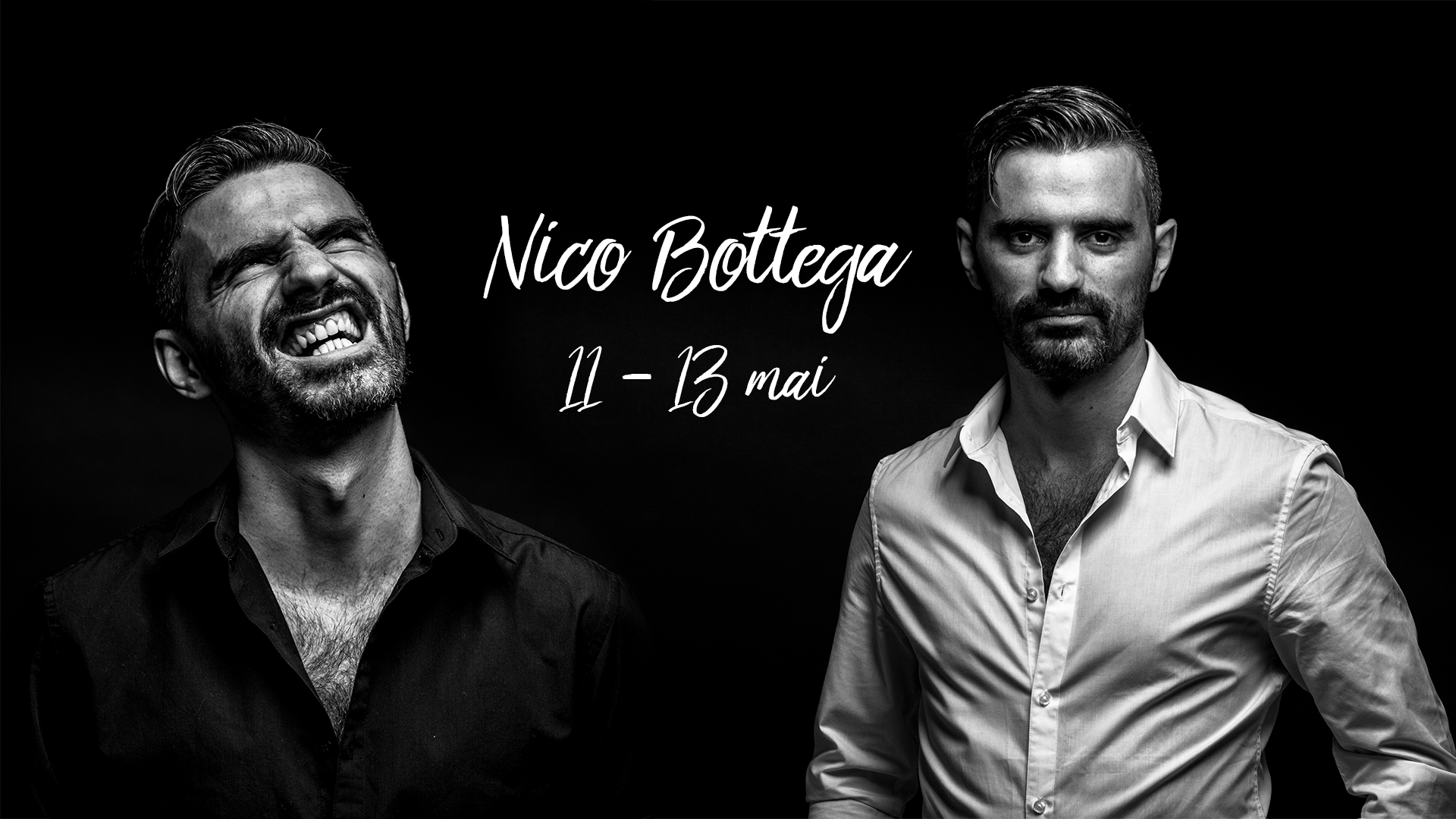Kurs med Nico Bottega
11 - 13 mai, 2018
Det blir 3 kurs, og disse er fordelt på 3 dager. Det gis anledning til å melde seg på hele dager. Fredag har kun ett kurs.

Kursplan
Nivå for alle kursene: Alle. Eller som Nico sier det: " If they can dance a tango, they can come to any of the classes"
Fredag
“Lineal and circular connection” (1h 30)
Connection is what makes tango so interesting. To be connected is to feel our partner, to feel their body but also their emotions. Once you are connected tango is easy, the hard part is to maintain that connection through your dance.
We are going to work with lineal connection with a few simple tools that will make it easy to feel and understand, and with circular connection working with the concept of “rolling”.
Lørdag
“Dancing from the guts”
To teach musicality is only possible by encouraging it to flourish by offering new tools to express what is already inside you, and for that you need to explore, to play. On this statement I base my teaching about musicality, and it’s what’s going to shape the workshop.
Part one: “Impulse” (1:30)
We take impulse in every step we take in tango. Is the “charge” we take from the base leg on the floor to take a step? While working with this concept from a technical point of view, we are going to see how it can be used in orchestras where we could use impulse at its best like in Pugliese, where it can be a great tool to interpret its powerful characteristic energy. And then we are going to contrast it with “guardia vieja” orchestras, where it can be used in a very different and yet important way.
Part two: “Density” (1:30)
To be dense, is to be able to say a lot with very little. A simple sidestep can tell a full story if you wish to. There is difference in density in different orchestras, and actually it fluctuates all the time in a single tango. The density of a song surrounds you and holds you down like the water does when you are walking submerged in it, and every movement it’s affected by it. We are going to study how it affects us, and how we can use it to express ourselves. Orchestras like Di Sarli, or Troilo will be of great help to understand this concept.
Part three: “Fury” (1:30)
Fury it’s what should happens to us when we listen to D’arienzo at its best, or a good milonga. It’s probably the easiest emotional state to understand that the music generate to us, but one of the hardest to channel. Whenever we enter this fury state, a big flow of energy comes into our tango.
In the first instance we are going to work to be able to unleash this state. And then, we need to learn how to channel all of this energy that can very easily overflow us.
We are going to work on tools that helps us to be efficient in the way we use and channel our energy on this state of “fury”, turning down the noise in our dance, that many times eclipses what we were trying to express.
Søndag
“What do I need to make a…”
The final result of movement is the consequence of a series of necessary conditions that must be present to allow it to happen. Making a “voleo”, a “gancho” or a “sacada” is very easy. The really difficult thing is to be physically prepared to do them. In this case, we will work on the technical concepts and the previous corporal preparation that becomes necessary in order to perform these movements.
Part 1: “What do I need to make a “Sacada” (1:30)
The sacada is a movement of invasion of space that the other leaves empty, thus generating the illusion of "sacar" (take away) the other's leg. To do them is very important to understand the distribution of the weight in one leg or the other of both dancers. It is also necessary to understand the lines in which we can move and the torsions that we can perform on top of those lines. The most difficult thing will be to be able to maintain the search of the bodies, the connection and the quality of movement in the moments of greatest difficulty.
Finally, we will color our “Sacadas” with the tools that we worked on the “Musicality from the guts” Ws.
Part 2: “What do I need to make a “Gancho” (1:30)
A “Gancho” can be performed in many different ways, but we will try to focus on the fundamental mechanism. We will take advantage of what we worked on in the class of “Sacadas”, and we will contrast each movement to find similarities and differences. Again the understanding of the distribution of weight and lines will be very important. The torsions will become even more important than in the “Sacadas”.
Finally, we will color our “Ganchos” with the tools that we worked on the “Musicality from the guts” Ws.
Part 3: “What do I need to make a “Voleo” (1:30)
The “voleo” is probably one of the most beautiful movements in the tango, but also one of the most complicated, since it demands a rather elevated body organization. Understanding the internal lines that cross the body, which we can torsionate and tense, and the limits of this will be key into achieving different movements. The tension of these lines in combination with a circular movement can cause the leg to look for a "short circuit" in the movement. This "short circuit" is the conventional “voleo”.
Finally, we will color our “Voleos” with the tools that we worked on the “Musicality from the guts” Ws.